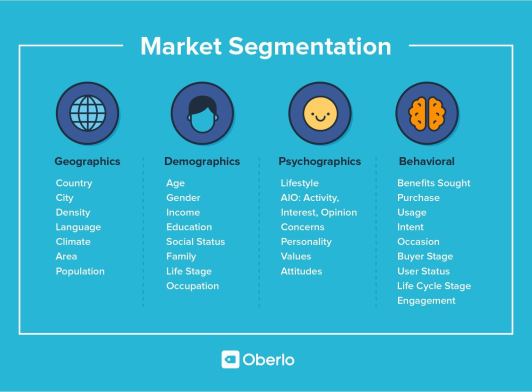Market segmentation is a process to divide the whole market into different segments of buyers depending on different characteristics. Each segment consists of consumers who have similar interests, locations, needs, and buying capabilities and respond similarly to a new product, service or market fluctuation.
Following are the four types of market segmentation:
- Geographic Segmentation
- Demographic Segmentation
- Psychographic Segmentation
- Behavioral Segmentation

1) Geographic Segmentation
In Geographic Segmentation, the market is divided into different segments of buyers depending on region, population density, and climate. The first deciding variable for geographic segmentation is region or location that includes village, town, city, state, country and postal code. Second is the population density that divides the market of buyers by focusing on densely populated regions. The third variable is the climate that helps to divide the buyers according to the regions with similar climatic conditions.
2) Demographic Segmentation
Demographic segmentation divides the market based on demographic variables like age, gender, family, life cycle, occupation, income, race, religion, social status, and nationality.
3) Psychographic Segmentation
In psychographic segmentation, the division of the market is based on buyers’ social class, lifestyle, activity, attitude, interest, and opinion.
4) Behavioral Segmentation
Behavioral segmentation is solely based on the buyer’s behavior and is considered a variable as it is never constant. These variables can be the buyer’s response to the product, interest in a product, attitude towards a product, buyer’s status, occasion, intent, buyer’s expected benefits, buyer’s loyalty towards a product or brand and buyer’s usage rate.